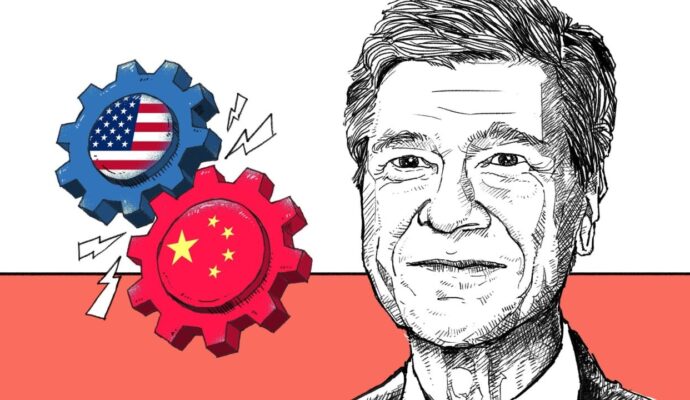
Amid a deepening demographic crisis that could affect China’s future labour supply, Beijing at the end of 2021 released a national five-year plan for the robotics industry, vowing to achieve a minimum annual growth of 20 per cent in robotics sales and double the country’s “robot density” between 2020 to 2025.
China had been the world’s largest industrial robot market for nine consecutive years since 2013, and is also one of the fastest-growing markets, according to data from the China Robot Industry Alliance. In 2021, sales volume of industrial robots in China reached 271,000, up by about 50 per cent from the previous year.
A robot makes coffee at the China Hi-Tech Fair in Shenzhen in November 2022. Photo: Xinhua
However, robot density, measured by the number of robots per 10,000 manufacturing workers, is often considered a better indicator of automation adoption in the manufacturing industry.
China’s manufacturing robot density reached 322 robots per 10,000 people in 2021, surpassing the US for the first time and putting it in fifth place, according to the World Robotics 2022 Report from the International Federation of Robotics.
China was still behind South Korea, which ranked first with 1000 robots per 10,000 people, followed by Singapore, Japan and Germany.
A robotic arm designed to collect swab samples for Covid-19 testings during a demonstration at the 2022 World Robot Conference in Beijing in August 2022. Photo: Reuters
On Tuesday, the Chinese commercial and financial hub of Shanghai also released a similar plan to boost its automation industry, as it looks to become a robotics industry hub by 2025.
The output of industrial robots in Shanghai reached an estimated 75,000 units in 2022, a 6 per cent year-on-year increase that put it ahead of all other Chinese cities, local authorities said.
As part of its goal to scale up the local robotics industry to US$14.76 billion by 2025, Shanghai aims to build 10 industry-leading robot brands, 100 benchmark robot application scenarios, 20 leading factories and 200 smart factories.
It also plans to increase its industrial robot density by 100 units per 10,000 people.


